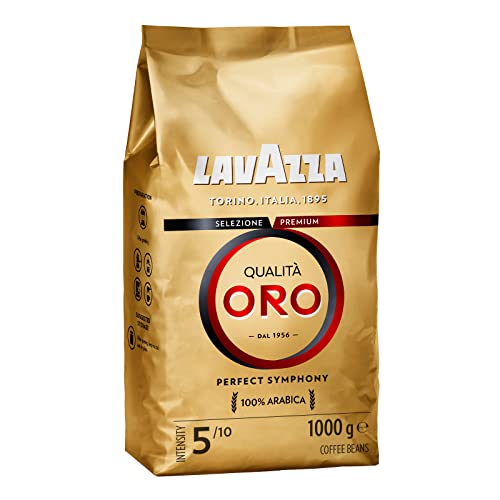Light Roast Arabica Coffee Beans
Light roast arabica coffee beans are the (relatively) new kid on the block. Creating delicious light roasts is a delicate balancing act of roasting artisanally and multi-origin blend.
The process of roasting removes some of the natural sugars found in the coffee bean, it also creates new sugars. This is why a lighter roast can have more sweetness than its dark roast counterpart.
Light Roast
A light roast is a coffee that has been lightly-roasted to preserve the natural flavor of the beans. Like the name implies, these kinds of coffees are usually lighter in body than dark roasts and can be enjoyed with a variety methods of brewing like drip, french press, pour over, and espresso. Light roasts tend to have more vibrant and fruity flavors and may highlight the qualities of a coffee's origin more than darker roasted styles.
This is especially relevant when working with single estate or micro-lot coffees. This roasting level can aid in bringing out the delicate and subtle flavors which are often lost in roasting in dark. The good news is, regardless of what you prefer each roast level offers amazing and unique coffees!
Light roasts also have a crisp acidity and mellow flavor. They can give you a boost of energy, without the heavy sensation that is often associated with dark roasts. These coffees are ideal for those who want to start their day with a little more energy and a fresh taste.
When it comes to caffeine, there is some truth to the common belief that a light roast contains more caffeine than a dark roast. This is a little false because it is based on the way you measure your coffee. If you weigh the coffee, a scoop with lighter roast will have more caffeine than one with darker roast (because of its larger mass). However, if you're measuring by volume, the two will have about the same amount of caffeine.
The roasting process is the primary ingredient in the perfect light roast. This is why it's crucial to choose an established roaster because poorly executed light roasts may have a strong burnt or bitter flavor that can overpower the other good qualities of the coffee. This is why we love to work with small batch arabica coffee beans and family-owned roasters who are committed to the highest premium quality arabica coffee beans.
Our Extra Mile Kenyan is a perfect example of a well-crafted light roast. It offers sweet flavors of baker's chocolate and stonefruit with a smooth mouthfeel. Additionally, it is sourced from a sustainable and ethical farm that works to fully sustainable agriculture practices.
Medium Roast
Often described as often referred to as Goldilocks roast, medium roast is the "just right" coffee between light and dark roast. Medium roasts have the same flavor of diner as dark roasts, but have more nuance and balance. They offer a variety of flavors and aromas.
Medium roast arabica beans are heated at lower temperatures and for a shorter time than roasts that are dark. The beans are heated to 385 degrees before they begin to pop (this is referred to as the first crack). Beans that have been roasted to this temperature will have a light dark roast arabica coffee beans brown color and will not have any oil on their surfaces.
This level of roasting preserves the distinctive aroma and taste notes of the coffee bean in its original form. This includes fruity and floral aromas and flavors that are indigenous to the region of origin. Lightly roasted coffee beans have an low acidity arabica coffee beans that is more vibrant, and more mellow body.
Depending on the beans used, a medium roast can have flavors like chocolate, caramel and even hints of spice. It is important to keep in mind that these flavors are less intense when compared to a light roast due to the fact that the beans have been roast for a longer period of time.
Aside from the richness and boldness of dark roasted coffee medium-dark coffees can be bittersweet and have a strong taste that can make it unpalatable for some tastes. Dark roasted coffee has a deep oily appearance and flavorful with bittersweet chocolate, dark carmel and smoke.
If you're seeking a smooth, balanced cup of coffee that's lighter than dark, but not as delicate as a light roast medium roast arabica coffee is the perfect choice. Our Happy Place blend is created with single-origin coffee beans from high-elevation farms that are Rainforest Alliance Certified and practice fully regenerative agriculture. It has flavors of blackberry, guava and cocoa with a soft finish.
No matter the roast degree, all varieties of coffee have similar amounts of caffeine. The amount of caffeine in coffee beans varies based on their natural levels and the amount of oxygen beans absorb when they are roast.
Dark Roast
Dark roast coffee is a type that is roasted longer than light roast beans. This gives a more complex flavor profile to be developed. This results in a coffee that has an intense, strong flavor and less acidity compared to a light-roasted coffee. This kind of coffee will suit those who prefer a strong cup to start their day.
Dark roast coffee is distinguished with its brown color and oily top which gives it a full and classic diner-style. It is distinguished by the roasting method. It is crucial to choose a top-quality bean that has been properly roast to obtain the best flavor.
If a coffee is dark roasted, it needs to be roast until the beans start to crack. This is the first indication that the beans have been properly roasted and that they are ready to be freshly brewed arabica coffee beans [https://mozillabd.science/wiki/Unexpected_Business_Strategies_Helped_Wild_Harvested_Arabica_Coffee_Beans_To_Succeed]. Dark roasted coffee should also have a soft mouthfeel and a balance of bitter and sweet flavors.
To find the finest dark roasted coffee, you should focus on beans of high grown arabica coffee beans-quality that have been roasted at just the right temperature. This allows the distinctive and exotic qualities of the beans to shine through without being overwhelmed by a strong roast flavor.
To determine the best dark-roasted coffee, it's important to consider the origins of the beans, as well as the region where they were cultivated. Certain regions are more suited to dark roasted beans because of their sweetness, while others have a deep, complex flavor that can match the intensity.
When you are choosing a roast that is dark it is important to keep in mind that the higher the roasting temperature the more caffeine will be found in your coffee. This is because coffee beans that have been roasted are exposed to more heat which causes them to release more caffeine. Additionally, the darker the roast, the more pronounced the bitterness will be.
Washed Coffee
Washed coffee beans have gone through a process referred to as "wet processing." After the process is completed the cherries, they are then de-pulped and then soaked in water tanks to soften the sticky mucilage that covers them. Then, the beans are dried and washed to get rid of any remaining pectin. This is a very popular method among specialty roasters, and an excellent choice for those looking for crisp, clean and acidic flavor profiles that have moderate amounts of body and sweetness.
Based on the duration of fermentation and the amount of mucilage remains on the seeds, different flavor compounds are created. These can have floral, earthy, fruity or the nutty note. This lets washed-coffees express a great deal of terroir, and varietal typicity. Natural processed coffees can create distinct flavors because of the fruity pulp that surrounds the bean.
After the mucilage is removed, the beans are dried either by being soaked in large tanks of water (as in the washed method) or laid out on patios or beds raised in the sun and rotated regularly. The process continues until the seeds have an moisture content of between 10-12 percent.
Roasting is the last step. As the roasting happens the temperature inside the bean will rise and a cracking sound will be heard, which is the moment when vapors begin to penetrate the outer wall of the bean. This is referred to as the first crack.
When this happens, the roasted beans are ready to enjoy. Light roasts taste fresh and fruity because they have not been roasted long enough for the oils to develop. Medium roasts are more bready and have more of a richer and deeper flavor because they've been roasted longer, and darker roasts can be very chocolatey or even smoky depending on how dark they've been roast.
This creates a variety of aromas and flavors. It is up to you to choose the coffee that is best for you! Explore a variety of single-origin roasts, including light, medium and darker roasts. Each one has its own unique flavor.
